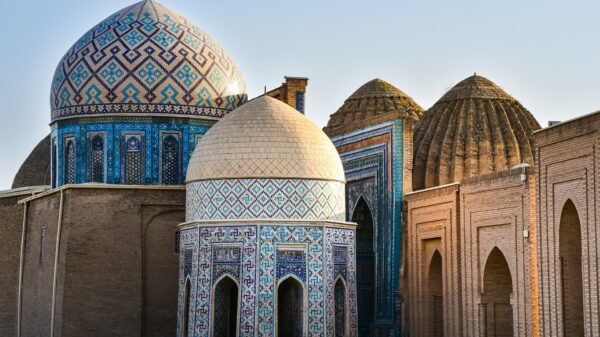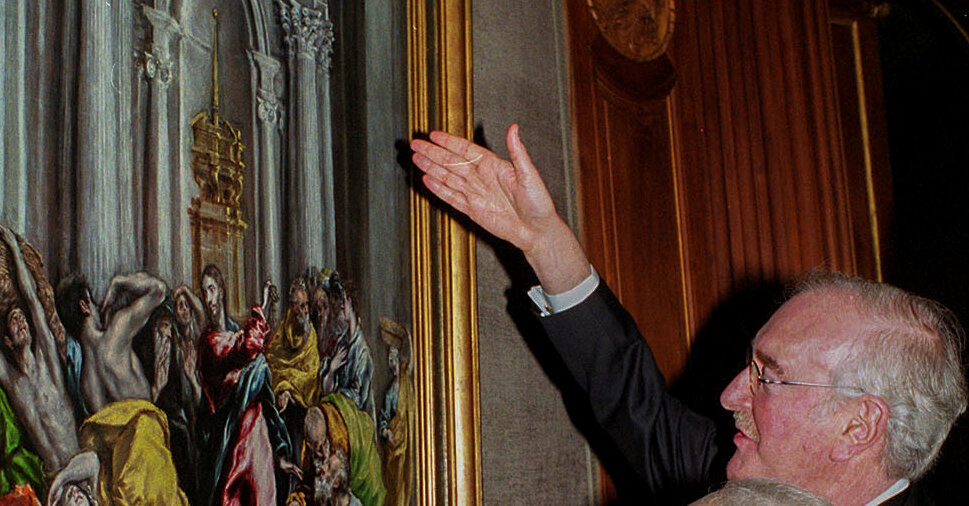He played a crucial role in reinvigorating a neglected area of Western art history, bringing figures from the past to life.
Jonathan Brown, an art historian, curator and teacher who produced magisterial studies of Diego Velázquez, El Greco and other painters of the so-called Golden Age of 16th- and 17th-century Spanish painting, and who went on to do groundbreaking work on Spanish colonial art in Latin America, died on Jan. 17 at his home in Princeton, N.J. He was 82.
The art historian Edward J. Sullivan, a longtime colleague of Professor Brown’s at the Institute of Fine Arts at New York University, said the death came after a long, unspecified illness.
When Professor Brown entered the field in the 1960s, international academic attention to Spanish Baroque art was languishing under the long, repressive dictatorship of Francisco Franco. He recalled that on a college visit to Madrid, he found the galleries of the Prado Museum dark, neglected and all but empty of visitors. By dedicating himself, virtually on the spot, to the art and artists he saw there — including the lodestar figure of Velázquez — he played a crucial role in bringing a neglected area of Western art history to light.
He did so in innovative ways. When he began his career, art history as a discipline was largely connoisseurial in orientation, focused on dating, attribution and iconography. While giving full weight to these matters, Professor Brown also viewed the art of Spain through the filter of social and religious history; he placed careers, personalities, and individual works in the political context of their time, an approach that presaged the direction scholarship would increasingly take. And he presented his research in an accessible, jargon-free style that brought figures from the past to life and connected lived realities of earlier centuries with those of the present.
Jonathan Mayer Brown was born on July 15, 1939, in Springfield, Mass. His father, Leonard M. Brown, was an insurance agent; his mother, Jean (Levy) Brown, was a librarian. Both were avid art collectors, traveling regularly to Manhattan, where they picked up small Abstract Expressionist works by Jackson Pollock, Philip Guston and Franz Kline. Jean Brown later became a major collector and patron of the experimental, interdisciplinary art movement Fluxus. (Her vast archive of Fluxus material is now housed in the Getty Center in Los Angeles.)
In 1956, Professor Brown entered Dartmouth College, where he initially studied Spanish literature. It was while spending his junior year in Spain, where he read José Ortega y Gasset’s 1948 book on Velázquez and encountered the artist’s work “live,” that he shifted his focus from literature to art.
After graduating from Dartmouth, he enrolled as an art history graduate student at Princeton University, where he earned a Ph.D. in 1964 with a dissertation on Sevillian Baroque painting. He began teaching there, and after his first book, “Italy and Spain, 1600-1700,” was published in 1970 and awarded the Arthur Kingsley Porter Prize by the College Art Association of America, he was made an associate professor.
In 1973, N.Y.U. recruited him to be director of the Institute of Fine Arts, the university’s graduate program in art history. He was appointed a full professor there in 1977 and continued teaching for 40 years, until his retirement in 2017, mentoring generations of teachers and curators.
Over time, his own books and exhibitions arrived in a steady flow. He wrote or contributed to monographs on El Greco, Francisco de Zurbarán, Jusepe de Ribera and Bartolomé Esteban Murillo, most of them accompanying exhibitions that he curated or collaborated on. In 1986, he published the landmark “Velázquez: Painter and Courtier,” a much-praised critical biography. His book “The Golden Age of Painting in Spain” (originally published in 1991, then expanded in 1998 and republished as “Painting in Spain 1500-1700”) is widely regarded as the standard survey of the subject.
In the early 21st century, Professor Brown began a long and fruitful relationship with the Frick Collection, located eight blocks down Fifth Avenue from the Institute of Fine Arts’ headquarters. There he worked on several exhibitions, among them, in 2006, “Goya’s Last Works,” a collaboration with the Frick curator Susan Grace Galassi. “I can’t recall too many exhibitions on this scale more revelatory,” the critic Michael Kimmelman wrote in The New York Times. The show was a popular hit.
In 1994, after doing a guest teaching stint at the National Autonomous University of Mexico in Mexico City, Professor Brown became deeply interested in the Spanish “colonial” — or to use the term he preferred, “viceregal” — art of Mexico, once called New Spain. This rich area of study had, up to that point, received little mainstream academic attention, either in the United States or in Europe.
His 2010 exhibition “Pintura de los Reinos” (“Painting in the Spanish Realms”) had significant impact when it appeared at the Prado, as did his “Mexican Art at the Louvre: Masterpieces From the Seventeenth and Eighteenth Centuries” when it opened in Paris in 2013. In 2015, he and other contributors published the overview book “Painting in Latin America, 1550-1829.” His courses at the Institute in these years included “Historiography of Painting in New Spain” and “Devotional Imagery in Spain and Spanish America.”
He is survived by his wife, Sandra; his children, Claire, Michael and Daniel; four grandchildren; and a brother, Robert Brown.
Professor Brown received many honors for his work in the United States and abroad. He was named Distinguished Scholar by the College Art Association and elected a fellow of the American Academy of Arts and Sciences and of the American Philosophical Society. Spain awarded him the Gold Medal of Merit in the Fine Arts, the Order of Isabella the Catholic and the Grand Cross of the Civil Order of Alfonso X the Wise.
The art of Spain itself remained his first and last love. A 2020 book of his collected essays, compiled by Estrella de Diego and Robert Lubar Messeri, gave a sense of his range in the field, with topics ranging from the Middle Ages to Picasso. And the last complete book he wrote, “In the Shadow of Velázquez: A Life in Art History” (2014), brought him back, through a retrospective look at his own career, to the artist who had changed his life and earned his lasting devotion.




























